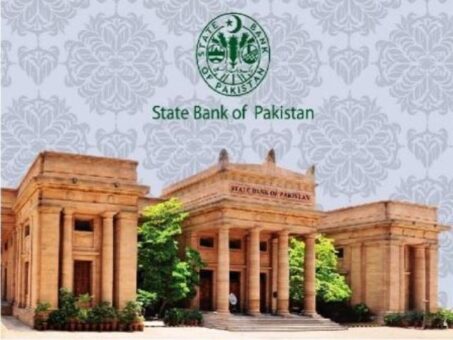KARACHI: The State Bank of Pakistan (SBP) on Monday kept the policy rate unchanged at 7 per cent for next two months. The SBP said that at its meeting on July 27, 2021, the Monetary Policy Committee (MPC) decided to maintain the policy rate at 7 percent.
Since its last meeting in May, the MPC was encouraged by the continued domestic recovery and improved inflation outlook following the recent decline in food prices and core inflation.
In addition, consumer and business confidence have risen to multi-year highs and inflation expectations have fallen.
As a result of these positive developments, growth is projected to rise from 3.9 percent in FY21 to 4 – 5 percent this year, and average inflation to moderate to 7 – 9 percent this year from its recent higher out-turns.
Imports are expected to grow on the back of the domestic recovery and rebound in global commodity prices, albeit more moderately than in FY21.
The MPC noted that the market-based flexible exchange rate system, resilience in remittances, an improving outlook for exports, and appropriate macroeconomic policy settings should help contain the current account deficit in a sustainable range of 2 – 3 percent of GDP in FY22.
Notwithstanding this moderate current account deficit, the country’s foreign exchange reserves position is expected to continue to improve this year due to adequate availability of external financing.
Against this backdrop, the MPC felt that the uncertainty created by the on-going fourth Covid wave in Pakistan and the global spread of new variants warrants a continued emphasis on supporting the recovery through accommodative monetary policy.
Looking ahead, in the absence of unforeseen circumstances, the MPC expects monetary policy to remain accommodative in the near term, and any adjustments in the policy rate to be measured and gradual to achieve mildly positive real interest rates over time.
If signs emerge of demand-led pressures on inflation or of vulnerabilities in the current account, the MPC noted that it would be prudent for monetary policy to begin to normalize through a gradual reduction in the degree of accommodation.
This would help ensure that inflation does not become entrenched at a high level and financial conditions remain orderly, thereby supporting sustainable growth.
In reaching its decision, the MPC considered key trends and prospects in the real, external and fiscal sectors, and the resulting outlook for monetary conditions and inflation.
The recent decline in inflation is consistent with the MPC’s view that recent price pressures are largely supply-driven and transient.
Headline inflation should begin to dissipate more visibly in the second half of the year when the February electricity tariff increase drops out of the base, converging to the 5 – 7 percent target range over the medium term.
The key risk that could lower inflation is a resurgence in the pandemic domestically and globally. Conversely, risks that could raise inflation include higher-than-expected global commodity prices, especially if these are coupled with upward adjustments in the PDL or domestic energy tariffs, as well as fiscal slippages that lead to stronger demand-side pressures through the year.
The MPC will continue to carefully monitor developments affecting medium-term prospects for inflation, financial stability and growth and will be prepared to respond appropriately, as and when required.
